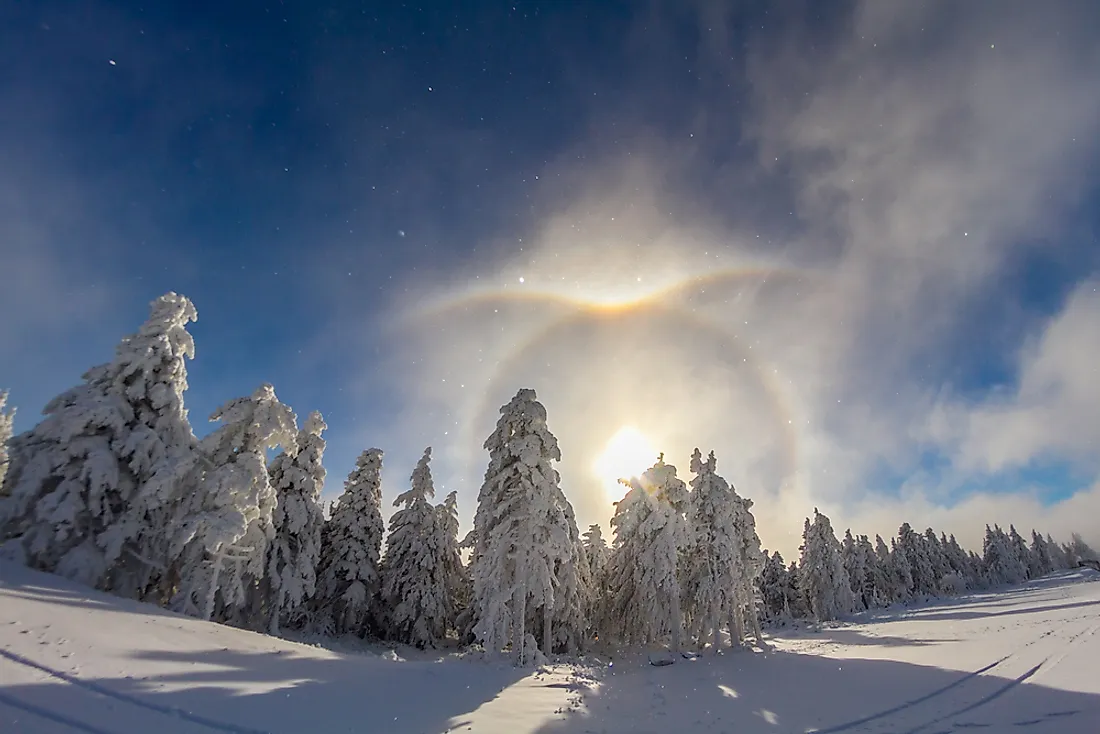What Is Diamond Dust?

Low level clouds that exist in the form of tiny crystals are called diamond dust. The diamond dust is usually first noticed when the tiny crystals reflect sunlight falling on them as they tumble through the air. The name of the precipitation pattern is derived from this glittering effect of the ice crystals. Diamond dust is also referred to as ice crystals with the METAR code of this meteorological phenomenon being IC. The phenomenon is most common in the polar regions where it may continue uninterruptedly for several days.
Characteristics Of Diamond Dust
Diamond dust bares some, but not all, similarities to fog. Like fog, diamond dust is cloud-based at the surface. However, unlike fog that is made up of liquid, diamond dust involves ice crystals. Also, fog usually reduces visibility in a significant manner whereas diamond dust is very thin and hardly reduces visibility. Only on some occasions, visibility is reduced to about 600 meters by diamond dust.
How Is Diamond Dust Formed?
The diamond dust ice crystal formation takes place when there is warmer air above the surface that mixes with the colder air closer to the surface. The mixing transports some of the water vapor to the air near the surface. This transfer increases the relative humidity of the near-surface air which might lead to ice crystal formation.
The formation of diamond dust is highly dependent on the temperature and the quality of air. If the temperature falls below 0 °C (32 °F) or the freezing point of water. However, that is not the only criteria for diamond dust formation. When a temperature falls somewhere between 0 °C (32 °F) and about −39 °C (−38 °F), and if the relative humidity is increased, there is a chance of formation of both diamond dust and fog. This might appear surprising but the chances of fog formation exist because very tiny droplets of water fail to freeze even at such low temperatures and remain as suspended water droplets. The droplets freeze faster if the air in the region bears dust particles or other particulate matter released from air pollution. However, the cleaner the air, the lesser the chances of freezing of the water droplets. However, beyond −39 °C (−38 °F), no water droplet, however tiny and pure they might be, can remain liquid. Thus, diamond dust formation below such temperatures is more common given the other conditions required for the formation of the ice crystals are satisfied.
Optical Phenomenon Associated With Diamond Dust
Diamond dust is associated with optical phenomena like the formation of light pillars, halos, and sun dogs. The diamond dust is composed of well-defined hexagonal crystals that, like a prism, can reflect or refract light in specific directions.
Where Can You See Diamond Dust?
Diamond dust happens in most parts of the world that experience cold winters, although the phenomenon is more frequent in the interiors of Antarctica. Here, diamond dust can be observed nearly all year round. According to a research report, 70% of the precipitation received at the Plateau Station of the frozen continent in the year 1967 fell in the form of diamond dust.
How Can Diamond Dust Influence Weather Reporting?
Diamond dust is known to interfere with automated airport weather stations on some occasions. The visibility sensor and ceilometer cannot interpret the falling diamond dust with certainty, and often report the visibility as zero (overcast skies) in the presence of diamond dust. However, to the human eye, the skies would appear to have clear visibility.











